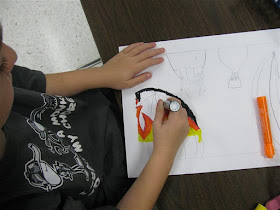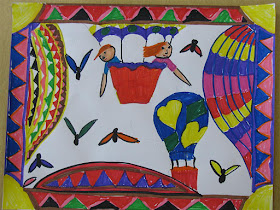 The idea for this project came from the book Frederick by Leo Lionni. He's one of my favorite children's authors. And although I am no longer able to work with the kindergarten classes due to a change in their schedule, I stay in contact with them and help them with projects as much as I'm able. But I do have some "unpublished" kindergarten work that I will try to share over time. This is a project I did with kindergarten in 2010. It would have been posted sooner but I have pictures all over the place. Just like my messy room, my computer is a mess too! But I think I have it organized finally. (crosses fingers)
The idea for this project came from the book Frederick by Leo Lionni. He's one of my favorite children's authors. And although I am no longer able to work with the kindergarten classes due to a change in their schedule, I stay in contact with them and help them with projects as much as I'm able. But I do have some "unpublished" kindergarten work that I will try to share over time. This is a project I did with kindergarten in 2010. It would have been posted sooner but I have pictures all over the place. Just like my messy room, my computer is a mess too! But I think I have it organized finally. (crosses fingers)I taught kindergarten for 8 years and this project was one of my favorites.
Here's my basic approach:
*We used scissors, glue, paper punches, crayons, and of course, colored construction paper.
*Cut the construction paper (ahead of time) to the proper size (squares and rectangles). **For example, I cut the mouse bodies approximately 2x3** --( I cut all pieces to size except for the legs and tails. Kids are on their own there.)
*Demonstrate how a square/rectangle can be made to look round simply by snipping off the corners.
(**I also demonstrate how to round off the corners but explain that if they have difficulty with doing that, just snip off the tips**)
*Add a light color to the background paper using the long-side of a crayon. As you will see in the gallery, we tried dark and it's not as nice looking.
*Add color to the rocks (for texture) using the long-side of a crayon. Using several colors gives a nice effect.
*Display ;)
BTW, I used as a model for the picture one of the pages of Lionni's book. Frederick is "sharing" the things he's stored up for the winter.
Here's a gallery of work.













